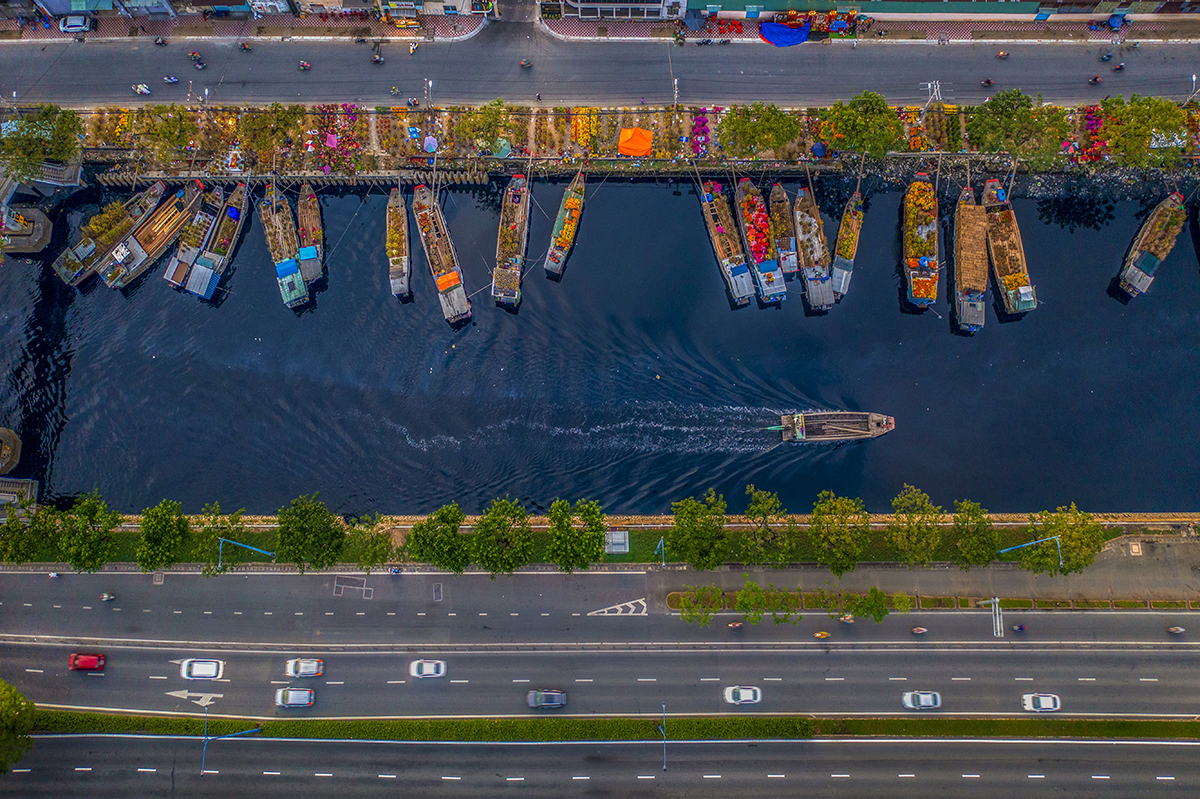Today, Ho Chi Minh City proudly bears the charm of a modern, dynamic, and vibrant metropolis embraced by the fertile Saigon River.

Covering an area of over 2,000 km² with a population exceeding 10 million, Ho Chi Minh City is Vietnam’s largest economic hub. Its rapid development has laid the foundation for Saigon to become one of the most glamorous cities in Southeast Asia.

The Ho Chi Minh City People’s Committee headquarters, located at 86 Le Thanh Ton Street, District 1, is one of the city’s iconic classical architectural landmarks, closely tied to generations of Saigon residents. Built between 1898 and 1909, the building was designed by architect Femand Gardès.

Landmark 81 Tower and the Vinhomes Central Park area shine brilliantly in the morning light. This area is likened to a “miniature city” by the Saigon River. Standing 461.3 meters tall with 81 stories, Landmark 81 draws inspiration from the traditional image of a bundle of bamboo, symbolizing strength and resilience reaching skyward.

Me Linh Square, District 1, is considered the "heart" of the western bank of the Saigon River. It is the intersection of six major streets (from left to right): Ton Duc Thang, Ngo Duc Ke, Ho Huan Nghiep, Phan Van Dat, Hai Ba Trung, and Thi Sach. Surrounding the roundabout are numerous office buildings and luxury hotels, and at its center lies an artificial pond featuring the statue of national hero Tran Hung Dao.

Forty-eight years after reunification, hundreds of high-rise buildings have sprung up to meet the demands of economic integration nationwide and across the region. At the same time, the city continues to preserve and protect its historical architectural heritage.

Vo Van Kiet Boulevard (also known as the East-West Boulevard) is a modern traffic artery connecting the Northeast and Southwest ends of the city, facilitating smooth access for vehicles entering and exiting Saigon Port. This road also links the southeastern and southwestern provinces without having to pass through the city center, thereby strengthening connectivity among localities in the Southern Key Economic Zone.

Ben Binh Dong is one of dozens of important wharves in Saigon’s canal network. In the past, it was a major waterway route connecting Saigon with the six southern provinces.

Saigon is transforming day by day, with its clean, green canals standing as proof of a modern and civilized urban landscape.

The Ho Chi Minh City Hot Air Balloon Festival is one of the city’s unique and innovative events following the model of a “festival within a festival.” It contributes to enriching tourism products and promoting Ho Chi Minh City as an attractive destination for domestic and international visitors, especially at the year’s end.

Nguyen Hue Flower Street, located on the 720-meter-long pedestrian street, has become an iconic part of Saigon’s Tet (Lunar New Year) celebration and is an indispensable event for city residents each spring.

One of the most significant modern infrastructure projects highlighting Saigon’s renewal is the Thu Thiem Tunnel, which is 1,490 meters long and connects District 1 with Thu Duc City. The tunnel greatly facilitates trade and travel between the eastern and western parts of the city.
